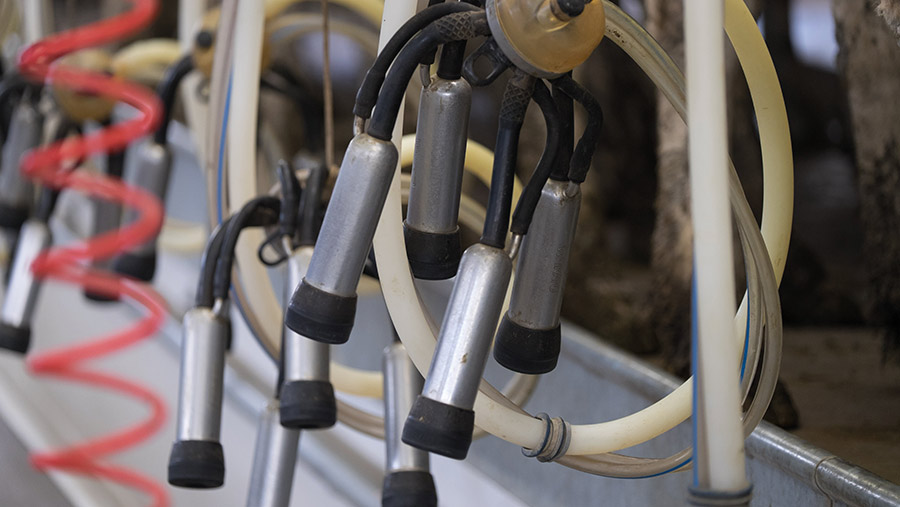Farmgate milk prices stall as wholesale markets suffer
 © Tim Scrivener
© Tim Scrivener Milk prices have begun to stall as the market adjusts to increased production and reduced wholesale demand.
Wholesale dairy values fell for the third consecutive period at the latest fortnightly Global Dairy Trade (GDT) on 1 November.
The GDT price index was down by 3.9% overall on the previous event, with skimmed milk powder and whole milk powder down by 8.5% and 3.4% respectively.
See also: How a Cheshire dairy is calving heifers at 23 months
The actual milk price equivalent (Ampe) also dropped back to 51.3p/litre in October, down by 1.9p/litre on month-earlier levels.
However, production has been increasing, with GB daily milk deliveries averaging 33.59m litres for the week ending 22 October based on the seven-day rolling average.
This was an uplift of 2.9% on the same week last year and 0.5% up on the previous week, according to AHDB figures.
Michael Masters, head of milk supply operations at Barbers Cheesemakers, said: “Some areas of dairy demand have softened as the result of higher prices.
“Meanwhile, milk production levels domestically and across the EU have strengthened in recent weeks.”
“Going forward into 2023, so much will depend on the critical balance of supply and demand, and whether the current increases in milk production persists.”
Nick Holt-Martyn, principal consultant at The Dairy Group, said prices were probably at the peak now and wholesale markets had definitely started to fall.
UK domestic supply has also turned a corner post-drought, he said.
Global milk production
Mr Holt-Martyn added that the northern hemisphere was producing more milk than it had at this point a year ago, with production in Europe no longer falling and now standing still.
Production is also rising in the US, he said.
Milk production in New Zealand is still reportedly behind and wet conditions due to La Nina is limiting production in the southern hemisphere.
“This side of the curve is the easy bit because producers are using inputs they bought previously. It is the other side of the mountain that’s going to be difficult because milk prices start to ease, but [producers] have got stock that was paid for at the peak,” said Mr Holt-Martyn.
“Therefore, you’ve got embedded costs that you can’t get out of but you’ve got a softening milk price. It’s really the new year when things are going to get tighter.”
Milk price moves
Arla has set the pace of the market with a 1.33p/litre price rise for its farmgate milk price from 1 November.
This will lift the conventional price to 52.24p/litre based on a standard manufacturing litre of 4.2% butterfat and 3.4% protein.
December
Dairy farmers supplying Muller who meet the conditions for the Muller Advantage programme will continue to receive a milk price of 48p/litre for a standard liquid litre of 4% butterfat and 3.3% protein from 1 December.
Dairy processor Freshways will continue to pay its suppliers 50p/litre for a standard liquid litre.
First Milk has announced it will hold prices into December at 49.69p/litre for a standard manufacturing litre, including the member premium.
Cheesemaker Barber’s is holding prices into December at 50.02p/litre based on a standard manufacturing litre.
Advice for producers
“When buying feed, it probably pays to do short-term contracts rather than long-term contracts,” said Mr Holt-Martyn.
“When you are buying straights, you should look to your requirements and dip into the market to make sure you have got supply when you need it. But don’t commit yourself too far forward at prices that may become unstable.”
Mr Holt-Martyn said quality forage was also crucial and it was important to produce the best possible quality of forage, regardless of yields.
Based on current farmgate milk prices and current feed prices there is a reasonable margin to be had, so it is viable to feed cows well, according to Mr Holt-Martyn.
